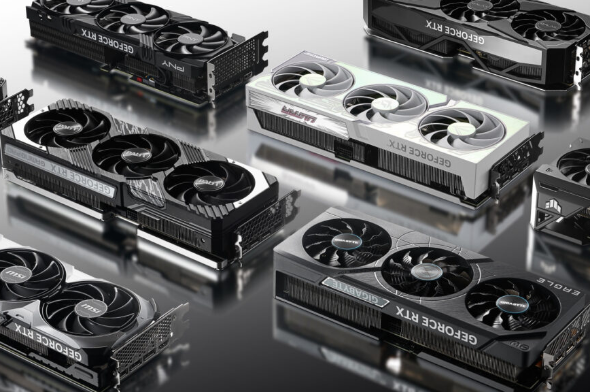Connection to DriversCloud Create a DriversCloud.com account Reset your DriversCloud.com password Account migration
GPU market continues its historic plunge
The combined sales of dGPUs and iGPUs are at their lowest in over eleven years, but things look like they're going to settle down.
Telecommuting and containment have shattered any benchmarks the computer industry may have had. While PC sales (desktop + laptop) had been on a slow but steady downward trend for many years, the need to equip oneself at home - for work as well as for leisure - has pushed many users to rush for complete machines as well as components, leading to an explosion in demand and some prices. Even today, some very specific components are out of stock.
However, these items have become the exception and the trend is towards overproduction and overstocking, while demand has dropped sharply since the lifting of all - or almost all - health constraints. The Jon Peddie Research institute, which usually follows the evolution of this market sector, has also studied the question and has produced an impressive report in which all the impressions and trends mentioned over the last few months are confirmed.
By combining the graphics solutions integrated into the processors (iGPU) and the graphics chips designed for dedicated graphics cards (dGPU), the institute observes a real collapse of the shipments. If the whole GPU market still reaches an impressive 64.2 million units sold in the fourth quarter of 2022, the figure is actually considerably down: we are talking about -38% year on year and even -15.3% compared to the third quarter of 2022. This is a logical decline after two exceptional years, but it is still surprising in its magnitude: it is the largest decline in 11 years.
All three leading companies in this sector are affected, but on closer inspection, there are still notable differences: with a 16.5% drop compared to Q3 2022, Intel is clearly the most affected. AMD and, even more so, NVIDIA are doing better with respective drops of 12.7 and 11.7 percent compared to Q3 2022. NVIDIA is taking advantage of this situation to further strengthen its hold on the dedicated board segment: its market share has increased from 78 to 82%.
To explain this distinction between Intel, AMD and NVIDIA, it is important to understand that even more than GPUs, it is the CPUs that are most affected by the drop in demand. For Intel, a very large part of the graphics solutions sold are those integrated into its CPUs. On the other hand, NVIDIA does not sell any integrated graphics solution, only dedicated cards. Despite the bad news, the situation on this specific market is not so bad. In fact, with 7.43 million units sold, we can even talk about a recovery compared to the third quarter. A recovery of 7.8%, which is mainly due to the - admittedly slow - drop in the price of graphics cards from our three manufacturers.









